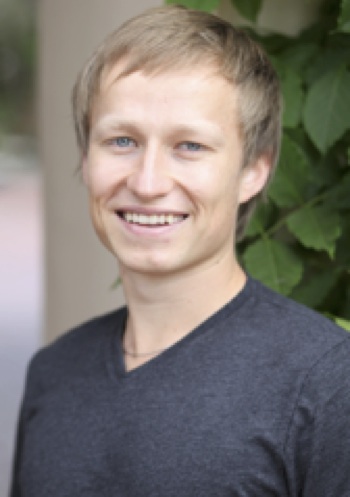Org. Synth. 2016, 93, 263-271
DOI: 10.15227/orgsyn.093.0263
Potassium tert-Butoxide-Catalyzed Dehydrogenative Cross-Coupling of Heteroarenes with Hydrosilanes
Submitted by Anton A. Toutov, Wen-Bo Liu, Brian M. Stoltz,
*1 and Robert H. Grubbs
*1
Checked by Jose M. Medina and Neil K. Garg
1. Procedure
A.
1-Methyl-2-(triethylsilyl)-1H-indole (2). An oven-dried 100-mL round-bottom Schlenk flask is equipped with a Teflon-coated magnetic stir bar (25 x 8 mm) and capped with a rubber septum (
Note 1). The side arm of the flask is connected to Schlenk line and the flask is cooled to room temperature under vacuum and back-filled with nitrogen.
Potassium tert-butoxide (1.34 g, 12.0 mmol, 0.2 equiv) is added to the flask under positive nitrogen flow (Notes
2 and
3), and then the flask is evacuated and back-filled with nitrogen three times.
N-Methylindole (7.48 mL, 7.86 g, 60.0 mmol, 1.0 equiv) and
triethylsilane (28.6 mL, 20.82 g, 179.5 mmol, 3.0 equiv) are added sequentially via syringe through the septum, resulting in a yellow heterogeneous mixture (Figure 1). After the septum is replaced with a glass stopper (
Note 4), the reaction mixture is degassed (
Note 5) and stirred at 45 ºC for 76 h (
Note 6), resulting in a dark purple solution. The heating bath is removed and the reaction mixture is allowed to cool to ambient temperature (~25 ºC), then anhydrous
diethyl ether (30 mL) is added slowly while stirring (
Note 7).
Figure 1. Reaction vessel prior to degassing
The reaction mixture is filtered through a silica pad (
Note 8) into a 500-mL round-bottom flask as a clear yellow solution. The reaction flask is rinsed with
diethyl ether (3 x 10 mL) and transferred to the top of a silica pad. The silica pad is washed with
diethyl ether (3 x 40 mL) and the combined filtrates are concentrated
in vacuo using a rotary evaporator to give an orange liquid (
Note 9). This liquid is transferred to a 50-mL round-bottom flask, and
diethyl ether (3 x 5 mL) is used to assistant the transfer. The resulting solvents are concentrated
in vacuo using a rotary evaporator (
Note 9) and put under high vacuum (ca. 0.03 mmHg) for 30 min. An egg-shaped magnetic stir bar (16 x 6 mm) is added to this flask and a distillation apparatus with a thermometer installed at the distillation head is attached (Figure 2).
Figure 2. Vacuum distillation apparatus
The product
1-methyl-2-(triethylsilyl)-1H-indole 2 (10.34-10.55 g, 70-72% yield) is isolated by vacuum distillation as a pale yellow oil (Figure 3) (Notes
10 and
11).
Figure 3. Product (2), a pale yellow oil
2. Notes
1. The flask and stir bar are dried in a 120 °C oven for 2 days before use. To limit the possibility of contamination from adventitious transition metal species, a brand-new stir bar is used for each reaction.
2. The submitters purchased the following reagents from commercial sources and used them without further purification:
KOt-Bu (sublimed grade, 99.99% trace metals basis, Aldrich),
N-methylindole (>96%, TCI) and
triethylsilane (99%, in Sure/Seal™, Aldrich). The checkers purchased and used without further purification
KOt-Bu (98%,
Strem Chemicals) instead.
3.
Potassium tert-butoxide (
KOt-Bu) is hygroscopic and kept in a desiccator or a glove box. It should be manipulated as quickly as possible to avoid hydrolysis.
4. The Schlenk flask is uncapped and quickly capped with a lightly greased glass stopper (oven-dried and cooled down in a desiccator) under a positive stream of nitrogen.
5. Freeze-pump-thaw cycles (x 4 times) are used for degassing: 1) close the sidearm stopcock and leave the attached hose of the Schlenk line on vacuum; 2) put this flask into liquid nitrogen until the mixture is frozen, open the stopcock to vacuum and pump off atmosphere for 10 min; 3) close the stopcock and thaw the mixture in an
i-PrOH bath until it just melts; 4) repeat steps (2) - (3) for 4 cycles, and 5) fill the flask with nitrogen gas.
6. An oil bath is used for heating. The mixture is stirred at 800 rpm throughout the reaction.
7.
Caution: Gas bubbles through the liquid vigorously.
8. Silica pad (diameter: 4 cm, height: 3 cm) is packed with silica gel (10 g). The silica gel is purchase from Silicycle (SilaFlash P60, 60 Å, 40-63 µm).
9. Rotary evaporation is performed at 25 mmHg and 25 °C.
10. Vigorous stirring (700 rpm) and full vacuum are maintained throughout the distillation. The condenser is cooled with ice-water (using a circulating ice-water pump), and a liquid nitrogen cold trap is connected between the distillation apparatus and high vacuum pump (see Figure 2 for setup). The checkers used chilled water (from the fume-hood faucet) to cool the condenser. Distillation procedure: 1) The oil bath is heated to 85 °C slowly. When the vacuum stabilizes around 0.24 mmHg (submitters pressure reading = 0.1 mmHg), a forerun comes off as a colorless liquid and the thermometer reads 23-28 °C.; 2) When the drip rate decreases, the heating bath is increased to 140 °C and more undesired liquid comes over at 0.24 mmHg (submitters pressure reading = 0.08 mmHg) when the thermometer reads ~70 ºC; 3) Again, as the drip rate decreases, the heating bath is increased to 165 °C, and when the vacuum is lowered to 0.23 mmHg (submitters pressure reading = 0.07 mmHg), desired
1-methyl-2-(triethylsilyl)-1H-indole (
2) product is isolated in a separate receiving flask (100-110 °C) as a pale yellow oil (Figure 3).
11. The product has been characterized as follows: R
f = 0.5 (10% CH
2Cl
2 in hexanes, EMD gel 60 F254 pre-coated plates (0.5 mm), visualized by short-wave UV);
1H NMR
pdf(500 MHz, CDCl
3) δ: 0.88 - 0.95 (m, 6H), 0.98 - 1.03 (m, 9H), 3.85 (s, 3H), 6.73 (d,
J = 1.0 Hz, 1H), 7.09 (ddd,
J = 7.9, 7.0, 1.0 Hz, 1H), 7.23 (ddd,
J = 8.3, 7.0, 1.3 Hz, 1H), 7.34 (dq,
J = 8.3, 1.0 Hz, 1H), 7.63 (dt,
J = 7.9, 1.1 Hz, 1H);
13C NMR
pdf(125 MHz, CDCl
3) δ: 4.1, 7.7, 33.1, 109.1, 113.0, 119.1, 120.7, 122.0, 128.7, 138.4, 140.3. IR (Neat film) 3058, 2953, 2909, 2874, 1608, 1492, 1464, 1414, 1372, 1356, 1325, 1299, 1233, 1167, 1102, 1069, 1005, 973, 797 cm
-1; HRMS
pdf(ESI+) calcd for C
15H
24NSi [M+H]
+: 246.16725, found 246.16679; Anal. calcd for C
15H
23NSi: C, 73.40; H, 9.45: N, 5.71; found: C, 73.22; H, 9.64; N, 5.7. The checkers determined the purity of the compound using qNMR: 14.7 mg of the product are dissolved in 0.9 mL of CDCl
3. Hexamethylbenzene, 9.8 mg (99+%, purchased from Alfa Aesar and used as received), is added.
1H NMR (500 MHz, CDCl
3) gave a product purity of 98.5%.
Working with Hazardous Chemicals
The procedures in
Organic Syntheses are intended for use only by persons with proper training in experimental organic chemistry. All hazardous materials should be handled using the standard procedures for work with chemicals described in references such as "Prudent Practices in the Laboratory" (The National Academies Press, Washington, D.C., 2011; the full text can be accessed free of charge at
http://www.nap.edu/catalog.php?record_id=12654). All chemical waste should be disposed of in accordance with local regulations. For general guidelines for the management of chemical waste, see Chapter 8 of Prudent Practices.
In some articles in Organic Syntheses, chemical-specific hazards are highlighted in red "Caution Notes" within a procedure. It is important to recognize that the absence of a caution note does not imply that no significant hazards are associated with the chemicals involved in that procedure. Prior to performing a reaction, a thorough risk assessment should be carried out that includes a review of the potential hazards associated with each chemical and experimental operation on the scale that is planned for the procedure. Guidelines for carrying out a risk assessment and for analyzing the hazards associated with chemicals can be found in Chapter 4 of Prudent Practices.
The procedures described in Organic Syntheses are provided as published and are conducted at one's own risk. Organic Syntheses, Inc., its Editors, and its Board of Directors do not warrant or guarantee the safety of individuals using these procedures and hereby disclaim any liability for any injuries or damages claimed to have resulted from or related in any way to the procedures herein.
3. Discussion
Heteroarylsilanes are valuable synthetic intermediates which are widely used in complex molecules synthesis,
2,3 medicinal chemistry and drug discovery,
4,5 and advanced materials and polymers synthesis.
6,7 The traditional methods for the synthesis of these motifs rely on deprotonation of heteroarenes by employing pyrophoric organometallic reagents (i.e., BuLi), followed by substitution reactions with silicon electrophiles. Direct dehydrogenative cross-coupling of C-H bonds of heteroarenes with Si-H bonds of hydrosilanes is an effective alternative method for the construction of C-Si bonds.
8 Despite significant advances in C-H activation recently, there are only a handful of methods that enable such a transformation. However, these examples are all limited to the use of precious metal catalysts (Ru,
9 Ir,
10,11 and Rh
12,13). Moreover, stoichiometric sacrificial hydrogen acceptors are necessary for these transformations.
We have established a method for such a dehydrogenative cross-coupling reaction using
potassium tert-butoxide as a catalyst that provides a unique way to access a wide array of heteroarylsilanes.
14,15 As described above, the desired silylation product
2 was obtained in good yield (70-72%). This procedure features readily available and inexpensive starting materials, mild reaction conditions, and good functional group tolerance.
The procedure reported here is applicable to a range of heteroarenes and hydrosilanes, giving access to synthetically valuable heteroarylsilanes on multi-gram scales.
14,15
Appendix
Chemical Abstracts Nomenclature (Registry Number)
Potassium tert-butoxide: 2-Propanol, 2-methyl-, potassium salt (1:1); (865-47-4)
N-methylindole: 1-H-Indole, 1-methyl-; (603-76-9)
1-Ethyl-2-(triethylsilyl)-1H-indole: 1-H-Indole, 1-methyl-2-(triethylsilyl)-; (2) (1085787-53-6)
Triethylsilane: Silane, triethyl-; (617-86-7)

|
Anton A. Toutov was born in Kiev, Ukraine. He obtained his B.S. degree in chemistry in 2011 from Queen's University in Kingston, Canada, where he developed new heterocyclic lithiation chemistries under the supervision of Victor Snieckus. He then moved to Caltech where he is currently a 5th year Ph.D. candidate in the laboratory of Robert H. Grubbs. His research focuses on using Earth-abundant elements in the development of efficient and sustainable chemical reactions. |

|
Wen-Bo Liu was born in China and he received his Bachelor's Degree in Chemistry from the Nankai University in 2006. He obtained his Ph.D. in organic chemistry (2011) from the Shanghai Institute of Organic Chemistry (SIOC) under the supervision of Professor Li-Xin Dai and Professor Shu-Li You. Then he joined the laboratory of Professor Brian M. Stoltz at Caltech as a postdoctoral scholar, working on asymmetric catalysis and sustainable chemistry. |

|
Brian M. Stoltz was born in Philadelphia, PA in 1970 and obtained his B.S. degree from the Indiana University of Pennsylvania in Indiana, PA. After graduate work at Yale University in the labs of John L. Wood and an NIH postdoctoral fellowship at Harvard with E. J. Corey, he took a position at the California Institute of Technology. A member of the Caltech faculty since 2000, he is currently Professor of Chemistry. His research interests lie in the development of new methodology for general applications in synthetic chemistry. |

|
Robert H. Grubbs obtained his B.S. degree from the University of Florida. After receiving his Ph.D. from Columbia University under the supervision of Professor Ronald Breslow, he joined the lab of James P. Collman as an NIH Postdoctoral Fellow at Stanford University. Then he started his academic career as an assistant professor in chemistry at Michigan State University in 1969. He moved to California Institute of Technology in 1978 and currently, he is the Victor & Elizabeth Atkins Professor of Chemistry. |

|
Jose M. Medina was born in Peru. He received his Bachelor's Degree in Chemistry from CSU Channel Islands in 2012. He is currently pursuing his Ph.D. in organic chemistry in the laboratory of Professor Neil K. Garg at the University of California, Los Angeles. His graduate research has focused on harnessing cyclic alkynes for the synthesis of heterocyclic compounds and the development of nickel-catalyzed C-C bond forming reactions from amides. |
Copyright © 1921-, Organic Syntheses, Inc. All Rights Reserved